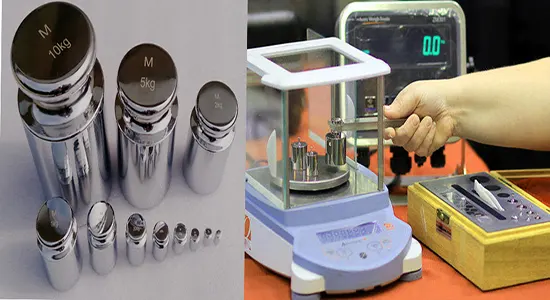If you handle machines and equipment, you should know the difference between calibration and validation. Calibration and validation both are related to the measurement devices, equipment, process, and system. The difference between calibration and validation is often confusing. By reading this article you may understand the between calibration and validation.
Table of Contents
Calibration vs Validation
Definitions of Calibration and Validation
Calibration is a process or action that compares the measurement values of a measuring device or equipment against a reference standard and certifies the measurement accuracy.
On the other hand, validation is a detailed documented process of confirming that the equipment or machine is installed correctly, operating effectively, and performing without any error.
In other words, validation is a systematic study that helps to verify that the equipment, facilities, processes and, systems perform the job adequately and consistently as specified.
The simple meaning of calibration and validation
Calibration simply means system performance checking. While validation is a performance analysis methodology.
Why calibration and validation are necessary?
Calibration is an operation to confirm that the equipment or measuring device is performing accurately. Whereas, validation is an operation to confirm that the analytical method is performing accurately. Calibration provides: Is equipment or measuring device accurate? Validation provides: Is equipment or measuring device system function satisfactorily? Now you may understand the difference between calibration and validation.

Image of Electronic balance calibration and Reference standard (Weight)
Purposes
Calibration is done to nullify or remove the deviation by comparing with a reference or know standard. While validation is done to verify the consistency of predictable results of the method, process, or procedure.
Benefits
Benefits of Calibration
Calibration is done to ensure:
- Specificity
- Linearity
- Accuracy
- Sensitivity
Benefits of Validation
- It will minimize rejection loss
- Reduction in utility cost
- Help timely corrective action
- Assure consistent production performance
- Ensure achievement of quality goals
- Reduce extensive finished product testing
- Easier maintenance of the equipment.
- Allow parametric release
- Sort out the main risk of production liability
- More rapid automation
The necessity of reference standard
Calibration of any equipment is done by comparing with a reference standard. While in validation, there are no known standard or reference standards used.
How Calibration and Validation are executed?
Calibration will be executed according to calibration SOP. While validation will be executed according to the validation protocol.
Summary of the difference between calibration and validation
| Features | Calibration | Validation |
| Definition | Calibration is a process or action that compares the measurement values of a measuring device or equipment against a reference standard and certifies the measurement accuracy. | Validation is a detailed documented process of confirming that the equipment or machine is installed correctly, operating effectively, and performing without any error. |
| Simple meaning | It is system performance checking. | It is a performance analysis methodology. |
| Objectives | To nullify or remove the deviation by comparing with a reference or know standard. | To verify the consistency of predictable results of the method, process, or procedure. |
| Uses | To confirm that the equipment or measuring device is performing accurately. | To confirm that the analytical method is performing accurately. |
| Reference Standard | It is done by comparing with a reference standard | There are no known standard or reference standards used.
|
| Procedure | Executed according to calibration SOP. | Executed according to the validation protocol. |
| Benefits | To ensure:
| a. It will minimize rejection loss
b. Reduction in utility cost c. Help timely corrective action d. Assure consistent production performance e. Ensure achievement of quality goals f. Reduce extensive finished product testing g. Easier maintenance of the equipment. h. Allow parametric release i. Sort out the main risk of production liability j. More rapid automation |
Also, Enthusiast visitors are reading:
First, Difference between Sterile and Pyrogen-free
Second, Difference between Drug and Medicine
Third, Difference between Packing and Packaging
Fourth, Difference between Pharmacokinetics and Pharmacodynamics
The basic between calibration and validation is ” calibration is comparing the measurement values of a measuring device or equipment against a reference standard and validation is confirming that the equipment or machine is installed correctly, operating effectively, and performing without any error as before or as stated. If you have any question after reading the between calibration and validation, comment, please.